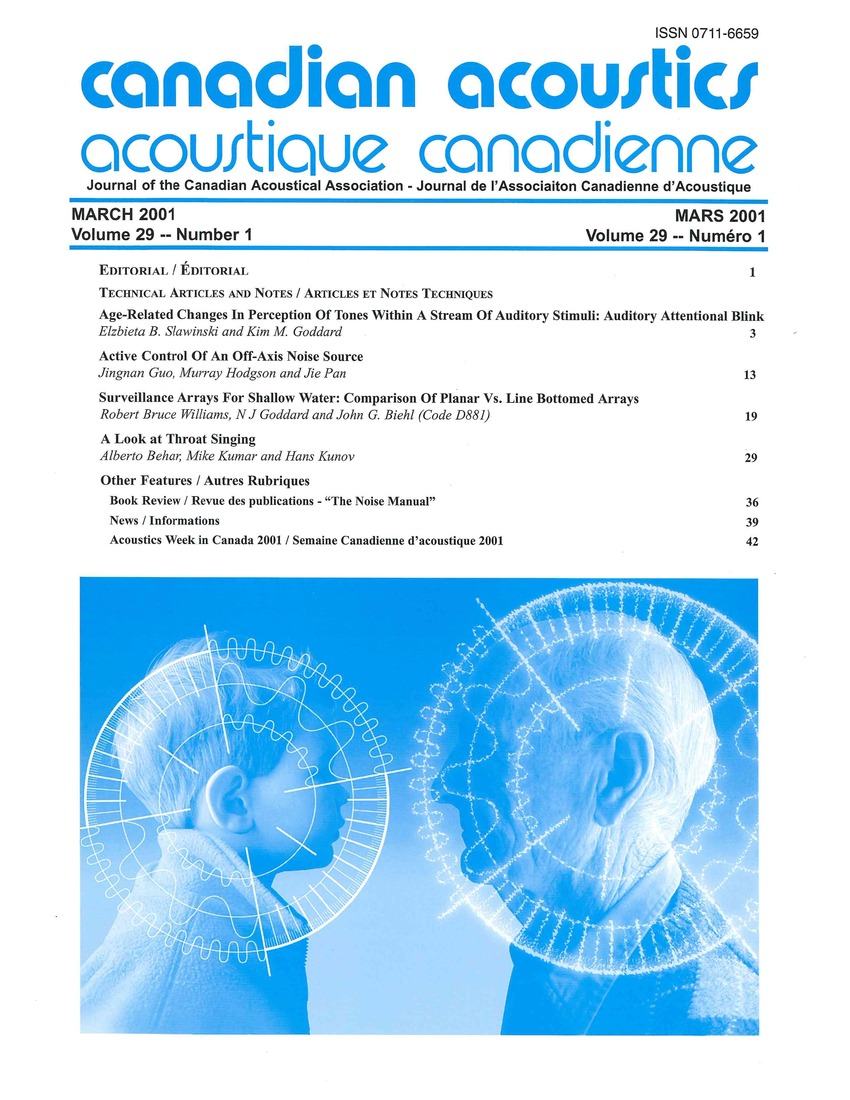A look at throat singing
Mots-clés :
Harmonic analysis, Impedance matching (acoustic), Natural frequencies, Resonance, Spectrum analysis, Overtones, Throat singingRésumé
Throat singing enables a singer to sing simultaneous with two,three and four voices. The main sound is generated by the vocal cords and other flexible structures like false cords, arytenoid cartilages, aryepiglottic folds and epiglottic root are vibrated to cause throat singing. The spectral analysis of the three samples of throat singing depicts peaks and valleys at the same frequencies with some large differences in the sound level at same frequency. Among the three distinct peaks observed, the first peak is due to the vibration of the vocal cords, corresponding to the fundamental frequency. The second peak is the harmonic of the first whereas the third peak represents the independant vibrations of the structures other than vocal cords.Fichiers supplémentaires
Publié-e
Comment citer
Numéro
Rubrique
Licence
Author Licensing Addendum
This Licensing Addendum ("Addendum") is entered into between the undersigned Author(s) and Canadian Acoustics journal published by the Canadian Acoustical Association (hereinafter referred to as the "Publisher"). The Author(s) and the Publisher agree as follows:
-
Retained Rights: The Author(s) retain(s) the following rights:
- The right to reproduce, distribute, and publicly display the Work on the Author's personal website or the website of the Author's institution.
- The right to use the Work in the Author's teaching activities and presentations.
- The right to include the Work in a compilation for the Author's personal use, not for sale.
-
Grant of License: The Author(s) grant(s) to the Publisher a worldwide exclusive license to publish, reproduce, distribute, and display the Work in Canadian Acoustics and any other formats and media deemed appropriate by the Publisher.
-
Attribution: The Publisher agrees to include proper attribution to the Author(s) in all publications and reproductions of the Work.
-
No Conflict: This Addendum is intended to be in harmony with, and not in conflict with, the terms and conditions of the original agreement entered into between the Author(s) and the Publisher.
-
Copyright Clause: Copyright on articles is held by the Author(s). The corresponding Author has the right to grant on behalf of all Authors and does grant on behalf of all Authors, a worldwide exclusive license to the Publisher and its licensees in perpetuity, in all forms, formats, and media (whether known now or created in the future), including but not limited to the rights to publish, reproduce, distribute, display, store, translate, create adaptations, reprints, include within collections, and create summaries, extracts, and/or abstracts of the Contribution.


